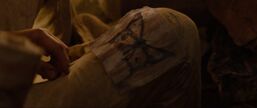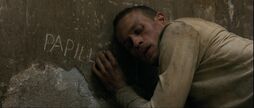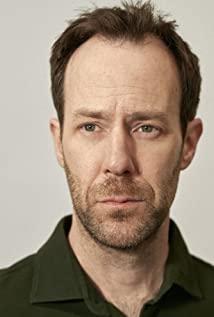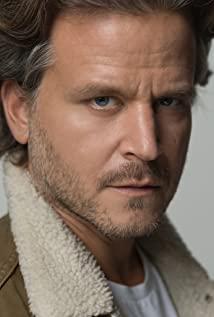"Papillon" is a prison escape movie based on the autobiography of French prisoner Henri Charrière, directed by Franklin J. Schaffner in 1973, "Papillon " It means "butterfly" in French, and here refers to Charrière's butterfly tattoo, which is also the name of the male protagonist adapted from his image in the movie .
In 2017, director Michael Noer brought such a classic prison escape film back to the screen, and premiered it in the Special Presentations section of the 2017 Toronto International Film Festival. reflect.
The same work has been adapted twice. The similarities and differences between the two versions are definitely worth exploring and excavating. This article will list some of the differences between the 1973 version and the 2017 version, and talk about the meaning behind these differences.
1. The locations of the stories in the two editions are different. The prison in the 1973 edition is Penitencier De St Laurent under the Penal Administration of French Guiana, and the prison in the 2017 edition is the same. Camp De La Transportation (Camp De La Transportation) under the French Guiana Prison Administration;
2. The 2017 version adds the starting plot of the story of the hero Papillon to complete the character's experience;
3. The 1973 version of Papillon was imprisoned on suspicion of killing a pimp and threatening the prosecutor, while the 2017 version of Papillon was imprisoned on suspicion of killing a whistleblower ;
4. In the 1973 version of Papillon, Papillon and Dega were assigned to Kilo 40 (Kilo 40.) , mainly responsible for clearing and moving the dead wood in the swamp; and in the 2017 version In "Papillon", the two are assigned to Route Zero , responsible for mining and transporting ore.
5. In the 1973 edition, Papillon met a merchant who collected butterflies and traded with him for a ship to escape from prison. In the 2017 edition, Papillon met a pimp who got into the mud due to heavy rain . They also traded ships for escape.
6. In the two editions, the reasons for Papillon’s first solitary confinement were basically the same, and the process was different. In the 1973 edition, Papillon and Degas were named and carried, and Papillon was undoubtedly found to be Zhu Luo, and Degas couldn't bear the blood and vomiting. Papillon chose to attack the prison guard to save Degas who was whipped, and finally attempted to escape and was put in solitary confinement. The 2017 version of Zhu Luo stabbed a prison guard to death and was eventually sent off. Go to the guillotine; Papillon was named and carried by the warden. Unexpectedly, Degas could not bear the blood and lost the ability to move. In the end Papillon was imprisoned in solitary confinement because he injured the prison guard and attempted to escape.
7. In the first solitary confinement, the two editions showed slight differences in details. The main line was still Papillon and the final food halved due to the receipt of Degas's coconut meal, but in the 1973 edition, the film In order to describe the suffering of Papillon, two small details are depicted; one is when he met another inmate who was on the verge of death and collapse when he was getting a haircut. He appeared again, and later when it was Papillon's turn to be on the verge, he asked the inmate next to him, and the inmate chose to tell the truth, and Papillon also realized that he was on the verge of death; second, Papillon often Wandering around in the cell, every five steps to the opposite wall, and on the day when he was finally released from solitary confinement, when Papillon finally walked out of the sixth step, he fell down due to lack of physical strength; these two details are missing. It continues into the 2017 edition, so in this part, the 1973 edition portrays the loneliness and pain of Papillons and the toughness of human nature particularly brilliantly.
8. The 1973 version of Clusiot (Clusiot) and the 2017 version of Celier (Celier) these two characters are people Papillon and Degas knew at work, and in the end they also assisted Papillon A group of people escaped from prison. The difference is that Trucio failed to escape from prison in the end, while Celier successfully got on the boat with the Papillon and the group; and in this part, the 2017 version added an episode, It was Celil and Papillon who fought over whether Degas, who was injured and dragging his legs, should stay on the boat. In the end, Degas stabbed Celir to death. This small detail setting also highlights Papillon and Papillon. The friendship between the two Degas;
9. The Papillon in both editions met a group of nuns on their way to escape, and they were eventually betrayed by the nuns and returned to prison for a second solitary confinement. The slight difference is that the 1973 edition of Papillon was in the second place. After the end of his imprisonment, he was sent to Alcatraz before encountering Degas. In the 2017 version, Papillon tried to save Degas before escaping. In the end, Degas and Papillon were taken together because of the lack of time. Grab, this detail further confirms that the friendship between the two is really stronger than Jin;
10. At the end of the 2017 version, the plot of Papillon after successfully returning to China from prison escape was also added, which corresponds to the newly added plot of Papillon being framed for escape from prison;
11. There are also some very small details in the two editions. For example, a similar line was said by different people . In the 1973 edition, Papillon invited Zhu Luo to escape and was rejected. Zhu Luo said that he did not want others to recite himself. In the end, Zhu Luo also died tragically because he did not specify the reason for the bad escape plan designed. In the 2017 version, it was changed to Zhu Luo invited Babilong to escape from prison, and Babilong did not want Zhu Luo because of his own plan. While backing the pot, Zhu Luo took the risk and escaped on his own, and was eventually sent to the guillotine for murder;
Secondly, in the 1973 version, Degas has always shown that he does not have a strong desire to escape from prison. Many times of escape are due to life's forced submission. If there is a relatively superior position and treatment in prison, Degas rarely knows how to escape. Consider escaping from the comfort zone, and the main contradiction of the film is basically around the struggle between Papillon’s desire for freedom and reality; and in the 2017 version, Degas has been assisting Papillon’s position in prison escape. The main line of the movie is around the prison escape plan of Papillon and Degas;
This is also when the two separated at the end of the film, the feelings held by Degas in the two versions are completely different; Degas in the 1973 version is tired of jailbreaking, and prefers to live in harmony, quiet, and the old life of growing vegetables and chickens; and The 2017 version of Degas didn’t want to drag Papillon anymore. After putting Papillon directly or indirectly into solitary confinement twice, Degas realized that he could not help Papillon’s escape plan. The success rate of Papillon acting alone may be higher, so Degas finally chose to complete Papillon.
Concluding remarks
On the whole, the 1973 version tends to describe Papillon’s escape journey, yearning for freedom and his own tough character. The whole film looks back on Papillon’s prison escape life; while the 2017 version is more focused on Papillon. The friendship with Degas, the direct or indirect interactions and contradictions between the two run through the whole movie. As Papillon said at the end of the film, this is not just my experience, it is also the experience of many people, as if The subtext is that there are also my friends in it.
View more about Papillon reviews











